Cosmetic restoration of teeth
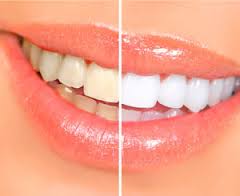
Cosmetic restoration of teeth represents one of the modern methods of restoring their natural beauty.
Cosmetic restoration includes a whole range of procedures aimed at eliminating defects in teeth and dentition and returning not only an aesthetic appearance, but also functionality.
Cosmetic restoration is carried out in the presence of the following defects:
- When darkening tooth enamel.
- If the teeth have cracks or chips.
- In the presence of irregular shape or natural deformation of the teeth.
- In the absence of one or more teeth.
- With strong abrasion of teeth.
Methods
Depending on the nature of the deformation, one of the restoration methods can be applied:
- Using light-cured composite materials (in a direct way - directly in the patient's oral cavity). Restoration is carried out in one visit to the dentist. Conducted by a dentist.
- By installing ceramic veneers (indirect method). It is carried out by the orthopedist.
Veneer Restoration
Cosmetic restoration of the front teeth with veneers is considered more preferable.
Veneers are dental plates made of porcelain or ceramic. The dentist fixes the plates on the front surface of the teeth.
The advantages of indirect restoration are that:
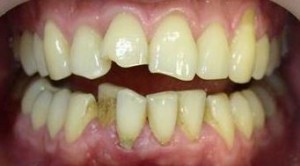
- Veneers protect tooth enamel from further destruction by aggressive factors.
- Cosmetic restoration with veneers gives the teeth a regular, natural shape.
- The teeth are completely indistinguishable from natural ones, since ceramics have a great similarity in color and transparency to tooth tissues.
- Veneers are quite strong and durable, subject to the rules of care.
- High aesthetic effect.
How is
- After anesthesia, the dentist prepares the tooth, removing a small layer of enamel on its front surface.
- The cast is taken and sent to the dental laboratory.
- Ceramic dental technician makes veneer.
- For the period of manufacturing a permanent design, a temporary veneer is fixed on the prepared tooth in order to protect the turned tooth surface from the negative effects of the aggressive environment of the oral cavity.
- The finished ceramic structure is fixed to the tooth with a special dental glue.
Video: “What is veneers”
Direct restoration
For the restoration of teeth, a wide variety of materials are used, thanks to which the restored teeth do not have external differences from the remaining teeth.
Most often, direct reduction is carried out by photopolymers (light-cured composite materials), which have many advantages.
To work with these materials, the dentist must have a high level of skill and extensive experience in conducting restorations.
Stages
Escalation teeth is carried out in stages:

- The tooth is prepared for restoration: if necessary, anesthesia is carried out, altered tissues are removed, and the carious cavity is cleaned.
- Hygienic tooth cleaning using a special brush and toothpaste.
- Complete isolation of the tooth from saliva and wet breathing of the patient. To do this, use a special latex scarf.
- Etching the surface of the tooth and applying adhesive.
- Layer-by-layer application of filling material with restoration of tooth shape. Using a special scale, the shade of the composite is selected in advance.
- Finishing a tooth - final modeling of the shape with special burs, followed by grinding and polishing of the finished restoration.
Among the shortcomings of direct restoration, the following should be considered:
- Restorations made from light-curing filling materials may darken and fade over time. Loss of aesthetics on the front teeth is a very unpleasant moment. Therefore, such restorations will often need to be changed.
- With severe tooth decay (more than half) or, if the tooth is depulped, the risk of restoration failure is greatly increased. In the case when the tooth is restored from the root (on the pin), then with a strong chewing load, breakage of the restoration, and sometimes the root, can occur.
Alternatives to direct restorations
- Installation of ceramic veneers. It is better to refuse direct restoration if the front tooth is destroyed only from the front side.
- Fixation of ceramic-metal or ceramic crowns on the front teeth. If the tooth is depulped and its crown part is severely damaged, then the direct restoration should be replaced by the installation of a crown.
- To restore the chewing tooth, a good alternative to the composite is to install a tab that can be made of either metal or ceramic.
- With a slight tooth defect, it can be hidden by inlaying semiprecious stone into the dental tissue. This procedure is performed using a laser. Inlay allows you to restore the strength of the tooth.
Cost
| Service | Prices (in rubles) |
| Complete crown restoration, including the installation of a fiberglass pin | 6000 |
| Restoration of the crown of the tooth on a metal pin | 5000 |
| Restoring ½ of the tooth | 3500 — 4000 |
| Chipped edge restoration | 1500 |
Before and after photos
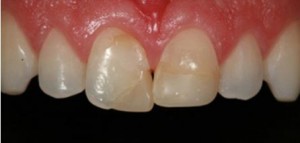 |
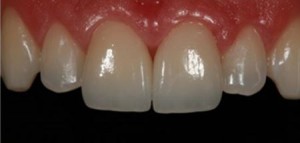 |
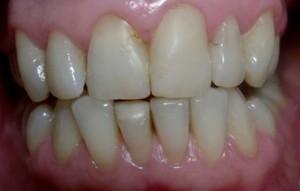 |
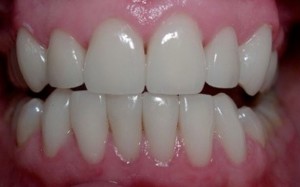 |
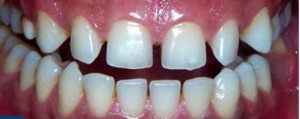 |
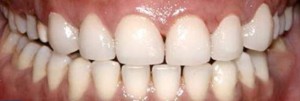 |